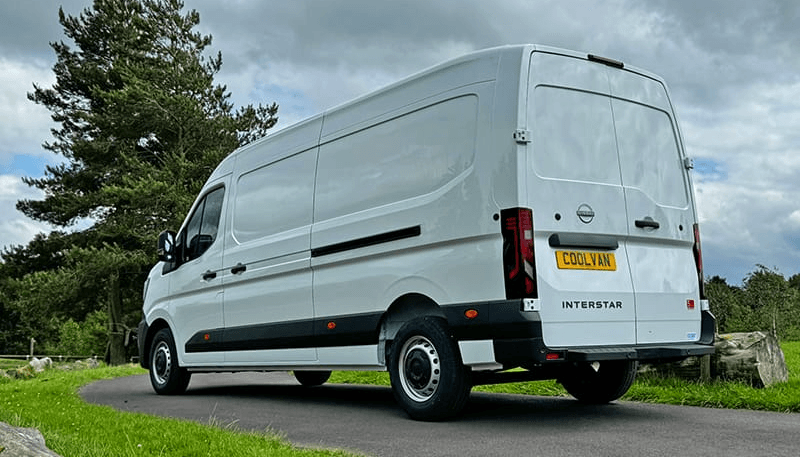Accurate payload calculations are critical for anyone running a commercial fridge van in the UK. Payload doesn’t just refer to how much stock you can fit in the back – it’s a regulated figure that includes everything loaded onto the van, from the products to the driver and equipment. It can sometimes be annoyingly easy to get wrong, and that can cause a variety of issues, including financial penalties, compromised performance, or even insurance invalidation. We’re committed to helping you avoid that sort of thing here at CoolVan, so below are five common payload mistakes that catch out business owners and fleet managers!
Loading the van unevenly
Weight distribution affects how the van handles, especially during cornering or emergency braking. With fridge vans, heavy items like chillers and stacked goods need to be evenly spread across the axle line, not lumped to one side or overloading the rear. An unevenly loaded van can still create serious handling risks.
In instances when the weight is concentrated over the rear axle or shifted to one side, that can put the suspension under extra strain. Over time, repeated journeys with poor weight distribution can even potentially cause structural damage to the van itself. It also increases the likelihood of load shifts in transit, which can destabilise the van or affect the airflow performance of the fridge unit.
Exceeding the legal gross vehicle weight
The maximum gross weight is the total legal weight of the van, including everything onboard. It’s set by the manufacturer and listed on the VIN plate. In the UK, for vans driven on a standard Category B licence, the limit is typically 3.5 tonnes.
Fridge units, extra insulation, and racking are all elements that can reduce the available payload, and it’s not unusual for operators to unknowingly go over the limit once the van is fully stocked. That can be a major issue, as a van that’s fully stocked without proper checks can easily end up exceeding its legal gross weight. If caught during roadside checks, it can also be prohibited from moving until offloaded, and fines or points may follow. What’s more, if the van is involved in an accident while overloaded, liability may fall on the business even if the driver was unaware of the excess.
Overlooking the weight of fuel, driver, and equipment
Another common mistake involves overlooking the combined additional weight of the driver, fuel, and any carried gear. The moment the driver enters the cab, and the fuel tank is topped up, they’re part of the payload. So is any onboard equipment – trolleys, straps, hand trucks, or internal shelving. These often get missed when calculating how much product can be loaded.
For example, a driver weighing 85kg and a nearly full 80-litre fuel tank can reduce usable payload by more than 150kg before a single item of stock is added. If the van carries specialist equipment for chilled or frozen delivery – such as data loggers, power banks or backup cooling units – those also count. Even cleaning supplies, spare uniforms, or basic tools can quietly reduce your legal loading margin, especially on smaller vans. (Now, we’re not suggesting that you break out the scales for your drivers – just being aware of it in advance!)
Relying on rough estimates instead of certified figures
It’s not unusual for some drivers to rely on memory of previous vehicle loads, or make rough guesses about how much their van can carry. However, that approach rarely holds up under scrutiny – the only reliable method is to use weighbridge data. Some operators invest in their own weighing equipment, but even a one-off weighbridge check at a local recycling centre or logistics hub can provide peace of mind. That can help prevent the risk of being caught out in compliance checks or insurance claims. Using certified weights also makes it easier to train new staff and helps eliminate errors during busy periods.
These are just some of the mistakes we can think of from the tops of our heads – you may well be able to identify a few more yourself! And of course, if you’ve ever got any questions about our fridge vans for sale, or our conversions service, don’t hesitate to ask our team here at CoolVan. With a wide variety of fridge vans for sale – including Volkswagen Crafters, Ford Transits and Mercedes Sprinters – you can be sure we’ll have all the advice and answers you need. You can give us a call on 0161 751 7140, or email us on sales@coolvan.co.uk, and we’ll be happy to help however we can!



